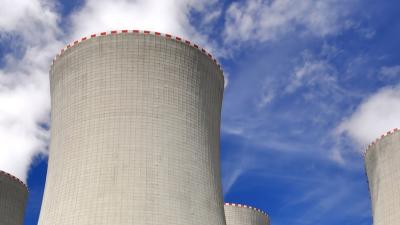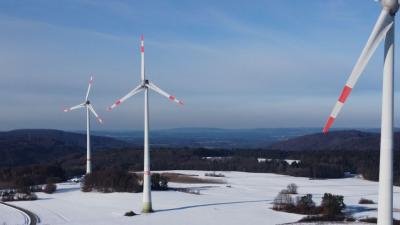
Tokamak Energy on fusion
After a long wait, fusion – the process by which stars derive energy – is now approaching a state of readiness.
This page is approximately a 8 minute read
This page was published on

As the UK pursues its commitment to net zero by 2050, the decade before that it a critical one. By 2040 we need to see the electricity system almost fully decarbonised, and along with that, significant strides must have been made in decarbonising our transport and heat management in buildings. This means that the UK electricity system in 2040 will have grown significantly to accommodate the new demand, connecting even more zero-carbon generators with strengthened transmission and distribution network infrastructure, running second-by-second with sophisticated data-driven optimisation top to bottom across that system. Post 2040 the focus, the infrastructure, and the investments in decarbonisation will continue as progress extends deeper into the harder-to-abate sectors. Around the world there will be many variations of this pathway reflecting different starting points and resources. The UK carries a responsibility, and an opportunity, to lead the way in many aspects of the global energy transition, and to act as a catalyst and an enabler. Worldwide, we need citizens, communities, cities, regions and governments all to play their part, working with purpose alongside businesses and the financial sector to make a transformation happen.
On route to these targets, the summer of 2021 marked an important milestone in the green energy story for the UK. Ørsted installed the first of 165 turbines at its 1400MW Hornsea Two offshore wind farm on the east coast of England. When complete in 2022, it will be the largest in the world (taking the mantle from the adjacent Hornsea One) and will have the capacity to power more than 1.3 million homes.
This new wind farm will demonstrate just how far the technology and industrialisation of wind energy has come in the past decade. Where 3MW turbines used to be the norm we are now seeing 14-20MW coming online. And with the advances in scale and efficiency, we’ve overcome the renewables trilemma of affordability, security and sustainability.
There’s much further to go of course, and from now on driving towards maturity will be hard yards, but the encouraging news is that there is an enormous, and growing, market appetite. Many other countries, along with the UK, are now seeing wind power as an important tool in their efforts to cut emissions in response to climate change. The global build-out of renewable energy is expected to accelerate significantly, supported by governments committing to ever-more ambitious renewable-specific targets to limit global warming. By 2030, the global installed capacity of renewable energy is expected to almost triple from today’s level. Offshore wind is expected to grow by a factor of seven, and onshore renewables by a factor of 2.5-3.
Since the UK became the first major economy in the world to commit to reaching net zero by 2050, and enshrine it in law, Prime Minister Boris Johnson has repeatedly singled out the importance of wind power. In October last year (2020), when announcing the government’s post-pandemic plans to Build Back Greener, he set out his vision to make the UK the world leader in clean wind energy – creating jobs, slashing carbon emissions and boosting exports. He committed to offshore wind producing more than enough electricity to power every home in the country by 2030, boosting the government’s previous 30GW target to 40GW. The following month’s Ten Point Plan for a Green Industrial Revolution focused on further increasing ambitions putting offshore wind at the top of the list.
The time is not just right for green energy, it is imperative. This has to be the decade of action. There are no more showstoppers in the way, the technology is good and continuing to improve, there are investors ready to spend, there’s the will to make this happen, so we must pursue more seabed permitting and make the switch.
The vision is that by 2040, wind farms in UK waters will have progressed from the 40GW currently targeted for 2030, to around 70GW, and capacity will continue to grow towards 2050. The UK has plenty of suitable seabed, today’s typical offshore wind farms are not visible from land and the turbines are well spaced out within the arrays, in addition those seabed zones continue to maintain or enhance other value, including for biodiversity. Onshore, I expect capacity to also grow and develop, especially with solar photovoltaics and wind which remain our cheapest forms of clean energy. Onshore wind developers have recently called for a target of 30GW in the UK, and I expect that by 2040 the UK will have levelled out even beyond this – by then many older sites will have been decommissioned and repowered with more productive technology, producing significantly more electricity from each turbine. And of course, wind farming can take place in and around farming and forestry without compromising those activities. Similarly, I expect that in 2040 solar photovoltaics will be better integrated with our communities and our built environment, widely welcomed for producing clean electricity very close to where we use it.
As for the turbines themselves, the technology continues to improve in many ways including growing taller, especially offshore, to achieve great efficiency and productivity from each square kilometre of wind farm seabed. Already today the range of energy technologies necessary for the system is available to deploy, and the improvements that continue to be made will increasingly help societies
succeed with tackling the necessary transition. Ultimately, a wide range of technologies and upgraded infrastructure all working together will enable us to run the overall system smoothly and reliably. Expect to see more energy storage, including stationary batteries as well as vehicles, new approaches for heat storage and management, and also renewable hydrogen made by electrolysis of water. All of this will be enabled by sophisticated system management of big data and control of both demand and production to operate in harmony, including with weather patterns.
We already see important new industries growing into the energy transition, in offshore wind and other new technologies, and this will continue as our global economy completes the pivot away from fossil fuels over just a few decades. In the UK we see thriving coastal communities acting as hubs for offshore wind farms, such as Ørsted’s hubs in Grimsby and Barrow, and increasingly the massive programme of renewal and upgrading of the nation’s onshore buildings and energy infrastructure will act as an engine of employment and the economy.
Ørsted knows what it’s like to make that transition. Once a fossil-fuel-based company, there came a pivotal moment around a decade ago when the opportunity for change was seized. A large project for a coal-powered plant had previously fallen through, meanwhile oil and gas had a bad year, and the company’s credit rating fell. At the time, offshore wind power was considered a niche technology, but the firm’s leadership saw its potential, took a leap of faith and decided to do everything they could to lead the way in industrialisation for greater efficiency, scaling up the farms and turbines, and driving down costs. The move paid off. What was once a north-western European hub of activity is now attracting growing interest from around the world from the US to Asia, across Europe and northern Scandinavia. Confidence is so strong that at a June 2021 capital markets day we announced setting more ambitious targets to reach an installed renewable energy capacity of 50GW by 2030. To support this build-out, Ørsted plans to invest £40 billion from 2020 to 2027 in offshore and onshore wind together with photovoltaics.
To effect the significant change that’s required demands a new mindset. And there is no time to waste. Electrification is the only option fast enough for our future energy needs, including for heating buildings and for transport. Because infrastructure is long lived, everything planned and built from now on needs the objective of decarbonisation. The scale of the challenge is massive, but achievable if we work together around the world, from governments and supply chains to investors and members of the general public.
The deep expertise of TWI has a great role to play here providing expert advice, driving innovation, like piloting new welding and fabrication systems to ensure the safety and structural integrity of the ever-larger turbines. The industry needs specialists with invaluable competencies and the ability to deploy centuries of know how.
The good news is that green energy technology has grown up. It’s been through many generations of evolution. Turbines are still growing and developing greater efficiency, there’s work to do ensuring that transmission grids are better integrated, and more innovation is on the way. The manufacturing process has become improved and refined, and former obstacles such as transporting huge components have been overcome. Everything is ready for delivery to scale.
The challenge for Ørsted will be keeping up with demand, with huge economies such as the US now mobilising, we need to be agile and responsive in all markets.
The growing global market appetite for clean energy gives me confidence in humanity. We can undo and correct the damage we have done. Future generations depend on this. They’re sure to look back and ask what on earth we were thinking. The year 2040 is a significant date for all of us – we’ll know by then whether we have saved the planet or ruined it.
With the capacity to power almost one and a half million homes, the world’s largest offshore windfarm - Hornsea Two - will be coming online in 2022. Set in the North Sea almost 90 kilometres off the Yorkshire coast and spanning 462km², it will be adjacent to Hornsea One – currently the world’s largest offshore wind farm. Once operational, Hornsea Two will produce 1.4GW using its 165 Siemens Gamesa 8MW SG 8.0-167 DD turbines. Standing a mighty 200 metres above sea level, and with a swept diameter of 167 metres, the turbines will deliver 20% more annual output than those used for Hornsea One. The majority of the 81-metre long blades will be delivered from the Siemens Gamesa factory in Hull and the project will use the world’s largest offshore substation to deliver electricity from offshore wind to UK homes.